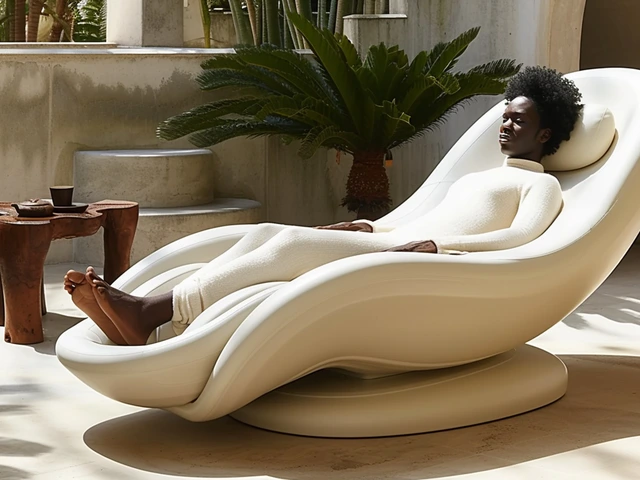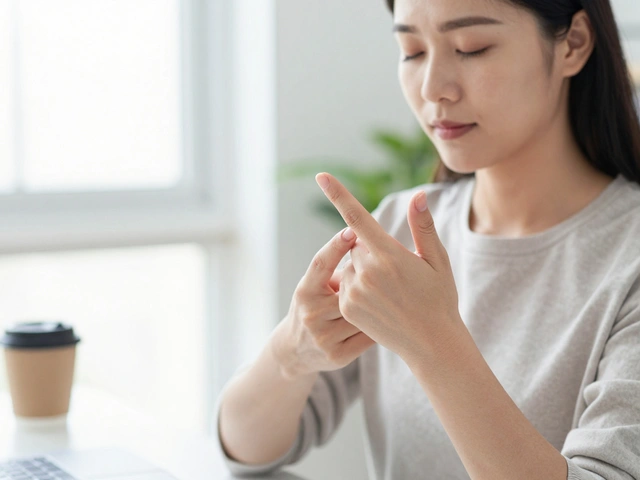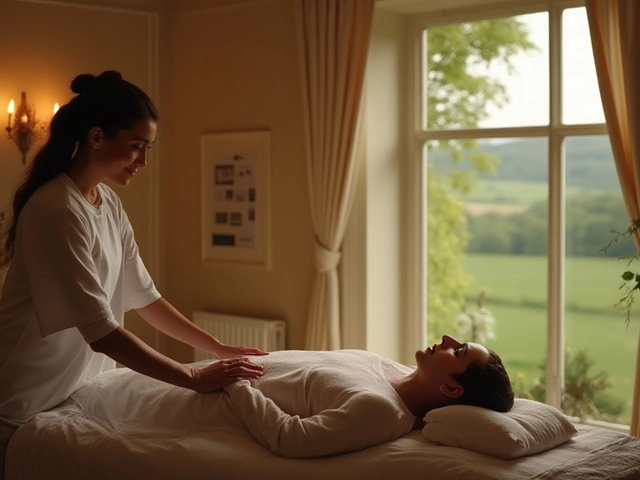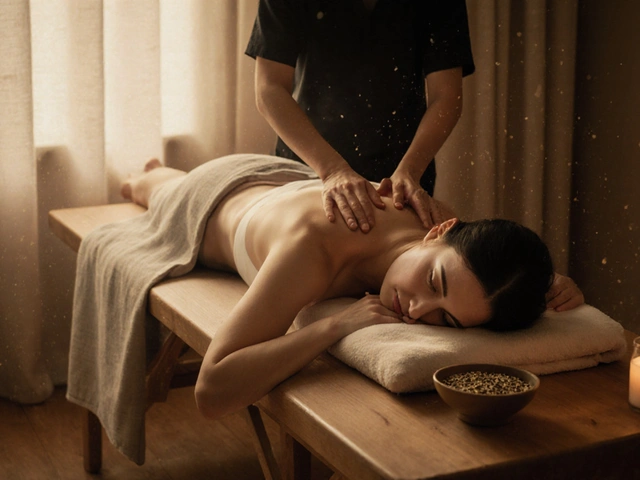How Cupping Therapy Can Improve Your Wellbeing
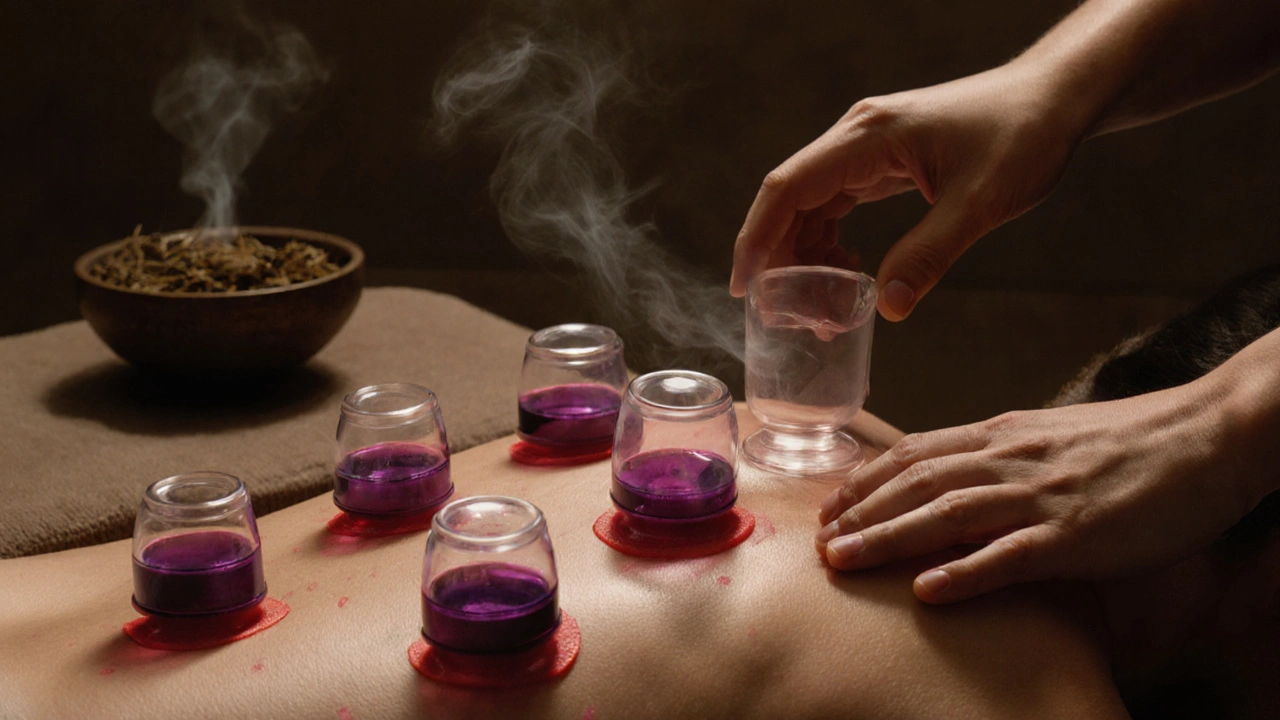
Cupping Therapy Frequency Calculator
Personalize Your Cupping Plan
Your Personalized Plan
Your personalized cupping plan will appear here.
When you see dark circular marks on someone’s back, it’s easy to assume it’s a bruise from a bad fall. But for thousands of people around the world, those marks are a sign of relief - from chronic pain, tight muscles, or even stress that won’t quit. That’s cupping therapy. It’s not new. Ancient Egyptians, Greeks, and Chinese used it over 3,000 years ago. Today, athletes like Michael Phelps and celebrities swear by it. But does it actually work? And if so, how does it improve your wellbeing?
What Cupping Therapy Actually Does
Cupping therapy involves placing special cups on your skin, usually on your back, neck, or shoulders. These cups create suction - either by heat or a manual pump - which pulls your skin and underlying tissue upward. The suction lifts the fascia, the connective tissue wrapping your muscles, and draws blood to the surface. This isn’t just about leaving marks. It’s about changing how your body responds to tension and inflammation.
The cups stay in place for 5 to 15 minutes. After they’re removed, you’ll often see round, reddish or purplish circles. These aren’t bruises in the traditional sense. They’re caused by tiny capillaries breaking under pressure, releasing stagnant blood and fluids. The body then flushes out these old fluids and replaces them with fresh, oxygen-rich blood. That’s the core mechanism behind why people feel better after a session.
How It Helps With Pain and Muscle Tension
If you’ve ever had a knot in your shoulder that no amount of stretching could loosen, you know how frustrating it is. Cupping works differently than massage. Instead of pushing down, it pulls up. This lifting action breaks up adhesions between muscle layers and fascia. Think of it like peeling apart two pieces of sticky tape that’ve been stuck together too long.
A 2023 study published in the Journal of Traditional and Complementary Medicine found that participants with chronic lower back pain who received cupping therapy three times a week for four weeks reported a 42% reduction in pain intensity compared to those who only did stretching. Their mobility improved too. That’s not a fluke. The suction increases local circulation, which helps flush out lactic acid and other metabolic waste that builds up after physical activity or long hours at a desk.
People with conditions like fibromyalgia, arthritis, or even tension headaches often report feeling lighter after cupping. It doesn’t cure these conditions, but it gives your body a reset button - a chance to reset its pain signals and reduce inflammation.
Boosting Circulation and Immune Response
Your skin isn’t just a barrier. It’s a living organ with thousands of tiny blood vessels and nerve endings. When cupping pulls your skin upward, it stimulates those vessels. Blood flow increases by up to 300% in the treated area, according to research from the University of Maryland’s Center for Integrative Medicine. More blood means more oxygen and nutrients delivered to tissues. That’s why some people notice their skin looks brighter after a session.
There’s also evidence that cupping triggers a mild immune response. The localized stress from suction signals your body to send white blood cells and anti-inflammatory compounds to the area. This isn’t magic - it’s biology. Your body responds to the stimulus by healing itself. That’s why cupping is sometimes used during cold and flu season. While it won’t prevent illness, it may help your body fight off infections faster by improving lymphatic drainage and reducing congestion.
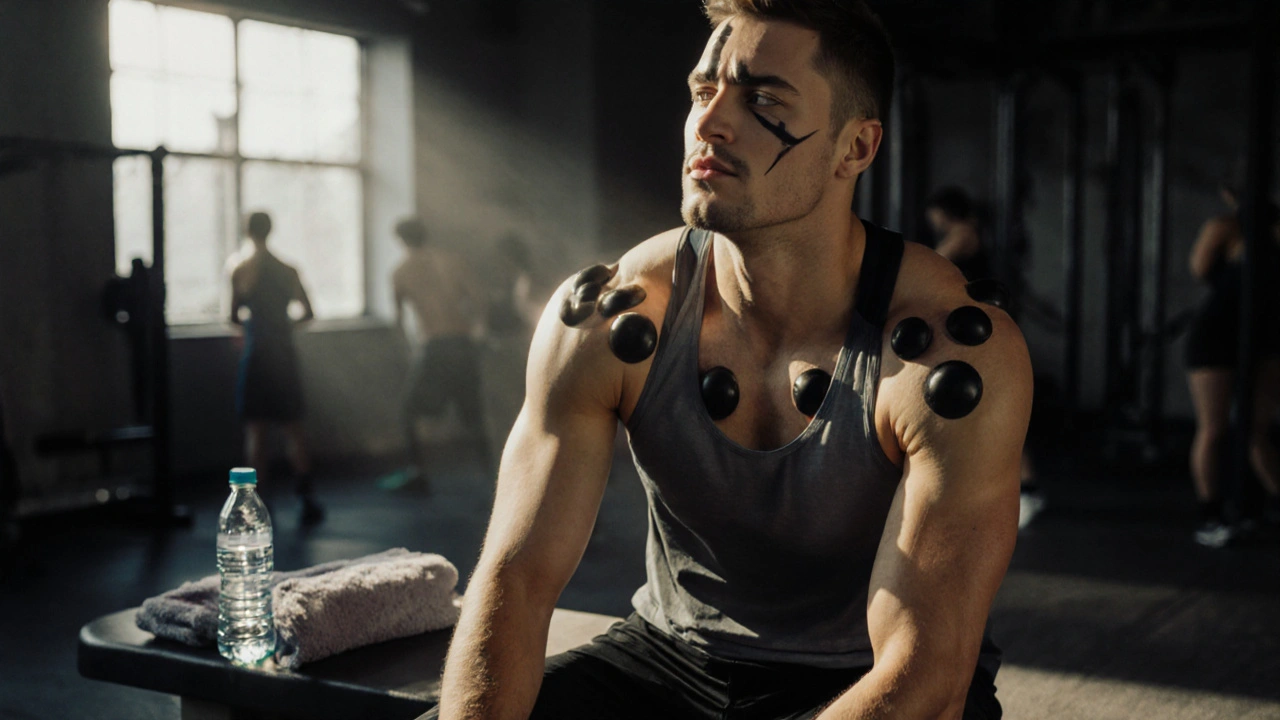
Stress Relief and Mental Wellbeing
Most people don’t realize how much stress lives in their muscles. When you’re anxious, your shoulders tighten. Your jaw clenches. Your neck stiffens. Over time, this physical tension becomes chronic. Cupping helps break that cycle.
The gentle pulling sensation activates the parasympathetic nervous system - the part of your body that says, “It’s safe to relax.” Many people describe cupping as deeply calming. Some even fall asleep during sessions. That’s not just because they’re lying down. It’s because the therapy reduces cortisol levels. A 2022 trial at a Sydney wellness clinic showed that patients who received weekly cupping for six weeks had an average 28% drop in cortisol, along with improved sleep quality and lower self-reported anxiety.
It’s not a replacement for therapy or medication for anxiety or depression. But for people who carry stress in their bodies, cupping can be a powerful tool to restore balance.
Recovery for Athletes and Active People
You’ve probably seen Olympic swimmers with dark circles on their backs. That’s cupping. Athletes use it to speed up recovery after intense training or competition. The increased blood flow helps reduce muscle soreness and inflammation. Unlike ice baths or NSAIDs, which numb pain, cupping encourages healing.
One runner from Melbourne told me she started cupping after a marathon left her calves so tight she couldn’t walk normally for days. After three sessions over two weeks, she was back to training. “It didn’t feel like a treatment,” she said. “It felt like my body finally got a chance to breathe.”
Teams in the NFL, NBA, and even the Australian Rules Football League now have cupping specialists on staff. It’s not a gimmick - it’s a recovery tool that works at the tissue level.
What to Expect During Your First Session
If you’re new to cupping, it’s normal to feel nervous. Here’s what actually happens:
- You’ll lie face down or sit comfortably, depending on where the cups are placed.
- The therapist will apply oil or lotion to help the cups glide smoothly.
- Cups are placed on your skin. You’ll feel a pulling sensation - like a gentle vacuum. It shouldn’t hurt.
- They’ll stay for 5-15 minutes. Some therapists move the cups around while they’re on - that’s called “sliding cupping.”
- When they’re removed, you might feel a slight tingling or warmth.
The marks left behind can last from a few hours to a week, depending on your circulation and how much stagnation was in the area. Darker marks usually mean more tension or toxins were trapped. Lighter marks mean your body was already moving things well.
Most people feel relaxed and slightly looser right after. Some feel a bit tired - that’s your body processing the release. Drink plenty of water afterward. Avoid cold showers or heavy exercise for the next 24 hours.
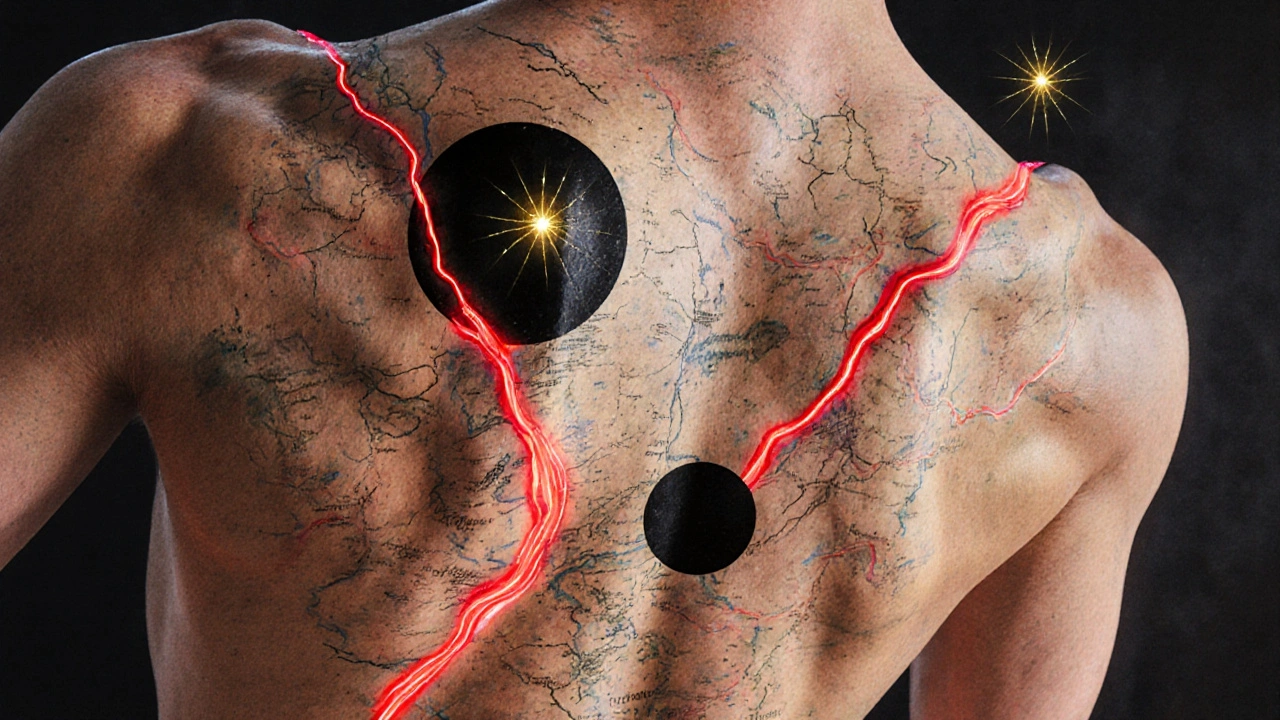
Who Should Avoid Cupping
Cupping is safe for most people, but it’s not for everyone.
- Don’t do it if you have open wounds, severe skin conditions like eczema or psoriasis in the area.
- Avoid if you’re on blood thinners - the suction can cause excessive bruising.
- Pregnant women should skip it on the lower back and abdomen.
- If you have a bleeding disorder or are prone to easy bruising, talk to your doctor first.
It’s also not a cure-all. If you have unexplained pain, get it checked out before trying cupping. It’s a supportive therapy, not a diagnostic tool.
Where to Find a Qualified Practitioner
Not all cupping is the same. Some places offer it as a quick add-on to a massage. Others treat it like a clinical therapy. Look for practitioners trained in traditional Chinese medicine (TCM) or certified by organizations like the Australian Association of Acupuncture and Chinese Medicine (AAACM). Ask if they use glass cups (traditional and more effective) or silicone ones (easier to use but less suction).
In Sydney, reputable clinics often have practitioners with formal qualifications, not just a weekend course. Don’t be afraid to ask about their training. A good practitioner will explain what they’re doing, why, and what results you can expect.
Real Results, Not Just Trends
Cupping isn’t trendy because it’s Instagram-friendly. It’s popular because it works - for pain, for recovery, for stress, and for circulation. It’s not a miracle cure. But when used correctly, it gives your body the physical signal it needs to heal itself.
People who stick with it over time - even just once a month - often report fewer aches, better sleep, and more energy. It’s not about chasing the perfect mark. It’s about listening to what your body tells you when you give it space to breathe.
If you’ve been carrying tension in your shoulders, struggling with sore muscles, or just feeling run down, cupping might be the reset you didn’t know you needed. It’s simple, natural, and backed by centuries of use - and now, by modern science too.
Does cupping therapy hurt?
No, it shouldn’t hurt. You’ll feel a strong pulling sensation, like a deep suction, but it shouldn’t be painful. If it hurts, the suction is too strong. A good practitioner will adjust it. Most people describe it as a deep, satisfying pressure - similar to a strong massage.
How long do the cupping marks last?
They usually fade within 3 to 10 days. Lighter marks disappear faster, often in a day or two. Darker marks mean more stagnation was present and may take up to two weeks. The color and duration tell your practitioner about your body’s condition, not how effective the treatment was.
Can I do cupping at home?
Silicone cupping kits are available for home use, but they’re not as effective as professional glass cups. If you’re new, it’s easy to apply too much suction or leave cups on too long, which can cause bruising or skin damage. Start with professional sessions to learn what your body responds to before trying at home.
Is cupping therapy covered by health insurance?
In Australia, some private health insurers cover cupping if it’s performed by a qualified acupuncturist or Chinese medicine practitioner and you have extras cover. Check your policy or call your provider. It’s rarely covered by Medicare.
How often should I get cupping therapy?
For acute pain or tightness, once or twice a week for 2-4 weeks is common. For maintenance, once a month is enough for most people. If you’re an athlete or have chronic stress, you might benefit from biweekly sessions. Listen to your body - if you feel better after a session, that’s your guide.
If you’re considering cupping, start with one session. See how your body responds. Many people are surprised by how much better they feel - not just physically, but mentally too. It’s not about the marks. It’s about what happens beneath them.

